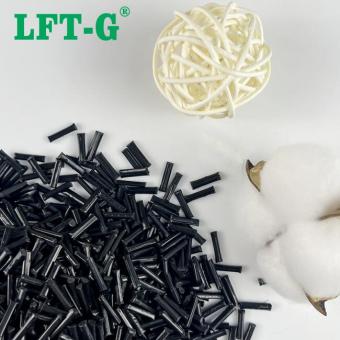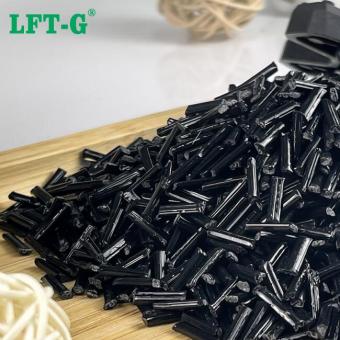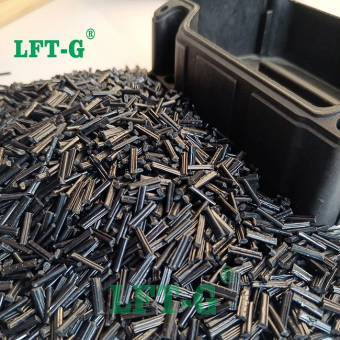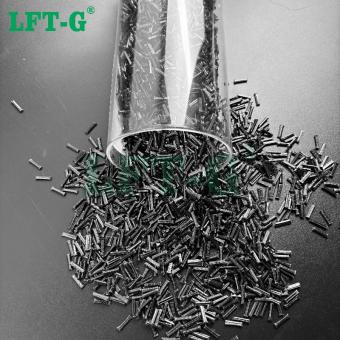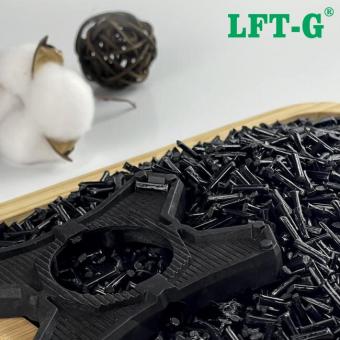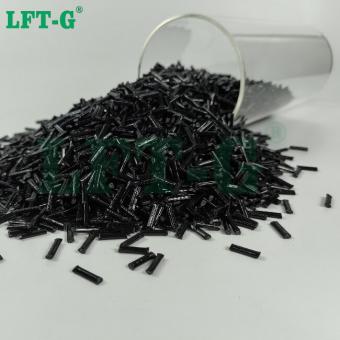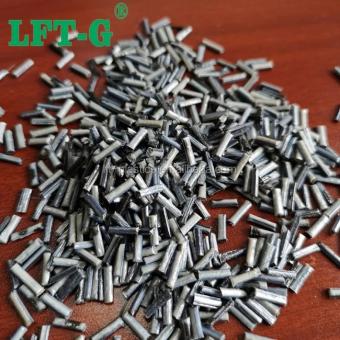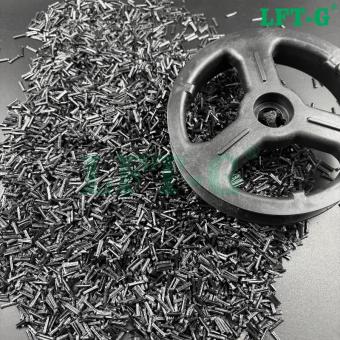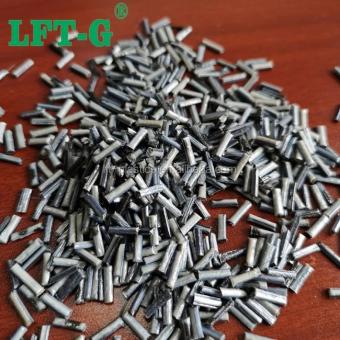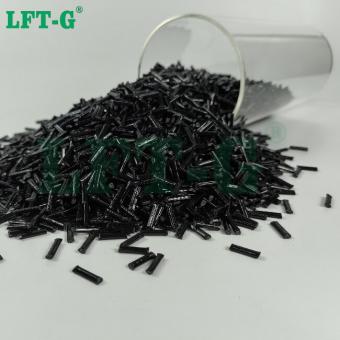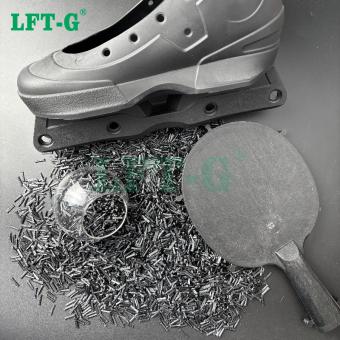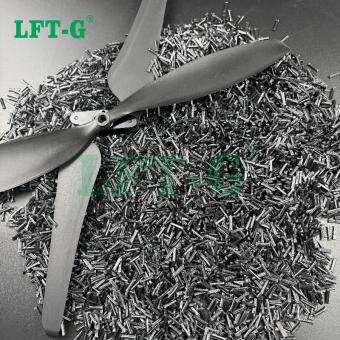Long carbon fiber is a new material with high strength and high modulus and excellent mechanical properties. It is a microcrystalline graphite material obtained by carbonization and graphitization of organic fibers. Its specific gravity is less than 1/4 of steel, and its strength is higher than that of steel. Corrosion resistant, high modulus, no melting. And a variety of resin substrates after impregnation extrusion molding into pellets, long carbon fiber polymer. Can be used for direct molding products. In recent years, it has been widely used in aerospace, mechanical and electronic chemicals.
-
Nylon 6 Thermoplastic Plastics Long Carbon Fiber Plastic CompoundsNylon 6 is a suitable material for injection molding. The resulting molded nylon parts possess great strength, as well as chemical and temperature resistance.
- long fiber thermoplastics metal replacement
- types of fibers in composites
- nylon heat resistance
- cf expansion
- carbon fibre granules
- long carbon nylon market
Tags :
-
Nylon 1,2 Thermoplastic Plastics Long Carbon Fiber Plastic CompoundsPA12 Long Carbon Fiber (LCF) reinforced composite is a high-performance engineering thermoplastic material based on a Polyamide 12 (PA12) matrix, reinforced with continuous long carbon fibers.view more
-
Nylon 66 Thermoplastic Plastics Long Carbon Fiber Plastic CompoundsThe carbon fiber reinforcement improves strength, impact resistance, and overall structural integrity, making it ideal for critical applications. With excellent thermal stability and chemical resistance, it's well-suited for high-temperature and harsh environments. This lightweight material provides a cost-effective alternative to metals, ensuring reliable long-term performance.view more
-
PPS Thermoplastic Plastics Long Carbon Fiber Plastic CompoundsDue to its excellent mechanical properties, thermoplastic carbon fiber is widely used in the automotive field of fuel system components, sensors, shell components. It is because of the high strength and stiffness of PPS-LCF, and the finished parts are not easy to damage. PPS-LCF also has a relatively low coefficient of thermal expansion to ensure the stability of the finished product.
- carbon fiber frameset
- carbon fiber handlebars
- printing carbon fiber
- carbon thermoplastic
- pps injection
- pps composite
Tags :
-
High Strength Polypropylene Carbon Fiber Filled Thermoplastic PelletsThrough carbon fiber reinforcement, can improve the strength of polypropylene materials, thermal deformation temperature and dimensional stability, expand the application of polypropylene materials.
- pp carbon fiber
- carbon fiber uv resin
- resin infusion carbon fiber
- pp resin
- carbon fiber plastic sheets
- carbon fiber resin 3d printer
Tags :
-
PLA Composite Pellets with 20-60% Long Carbon Fiber ContentPLA long carbon fiber reinforced material combines the environmental benefits of biodegradable PLA with enhanced mechanical strength and stiffness. It offers a sustainable solution for applications requiring lightweight performance, making it suitable for prototyping, consumer goods, and lightweight structural parts.
- plastic carbon fiber
- carbon fiber pla
- pla carbon fiber filament
- carbon fiber pla strength
- carbon fiber plastic
- resin for carbon fiber
Tags :
-
PEEK Composite Pellets with 20-60% Long Carbon Fiber ContentPEEK long carbon fiber reinforced material delivers outstanding mechanical strength, heat resistance, and chemical stability, making it suitable for extreme-performance applications. It is ideal for aerospace, medical, and industrial components requiring lightweight durability and long-term reliability.view more
-
PPS Composite Pellets with 20-60% Long Carbon Fiber ContentPPS long carbon fiber reinforced material offers exceptional mechanical strength, thermal stability, and chemical resistance, making it ideal for high-performance engineering applications. It is widely used in automotive, electrical, and aerospace industries requiring lightweight yet durable solutions.
- pps polyphenylene sulfide
- polyphenylene sulfide resin
- polyphenylene sulfide plastic
- carbon fiber surfboard
Tags :
-
LFT Polyetheretherketone Long Carbon Fiber Filled CompositesPEEK long carbon fiber reinforced material delivers exceptional mechanical strength, high temperature resistance, and superior dimensional stability, even under extreme conditions. The addition of long carbon fibers significantly boosts its stiffness and fatigue resistance, making it ideal for aerospace, automotive, and medical applications.
- peek polyetheretherketone
- peek fiber
- carbon fibre peek
- carbon filled peek
- peek carbon fiber filament
- peek carbon fibre
Tags :
-
LFT Polylactide Long Carbon Fiber Filled CompositesPLA long carbon fiber reinforced material offers lightweight strength, excellent stiffness, and biodegradability, making it ideal for sustainable structural applications. The integration of long carbon fibers significantly enhances its mechanical performance compared to pure PLA.view more
-
LFT Polyphenylene Sulfide Long Carbon Fiber filled CompositesLong carbon fiber reinforced PPS provides exceptional thermal stability, superior chemical resistance, and excellent dimensional precision. It is well-suited for high-performance applications in automotive, electronics, and aerospace industries.view more
-
LFT Nylon Polyamide 1,2 Long Carbon Fiber filled CompositesLong carbon fiber reinforced PA12 offers excellent mechanical strength and outstanding chemical resistance, making it ideal for demanding industrial applications. Its enhanced stiffness and lightweight properties improve overall performance and durability.
- carbon fiber nylon filament
- 3d printing nylon carbon fiber
- pa 12 nylon
- nylon 12 manufacturers
- nylon 12 cf
- nylon 12 properties
Tags :

 e-mail
e-mail English
English français
français Deutsch
Deutsch русский
русский italiano
italiano español
español português
português العربية
العربية 日本語
日本語 한국의
한국의 中文
中文












